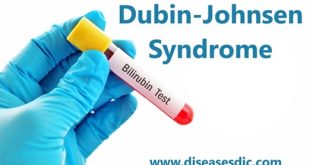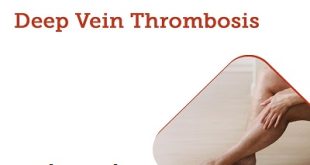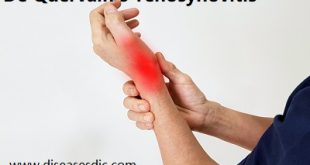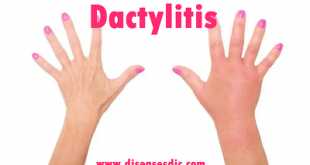Dead Butt Syndrome Overview
Dead butt syndrome, also known as gluteal amnesia, is a problem affecting the glute muscles that occurs from inactivity and a sedentary lifestyle. The Gluteus Maximus (GM) muscle is the largest and most powerful in the human body. It plays an important role in optimal functioning of the human movement system as well as athletic performance. It is however, prone to inhibition and weakness which contributes to chronic pain, injury and athletic under-performance.” When you don’t use your glute muscles enough and sit in a fixed position for long periods of time, this causes your hip flexors to tighten, your glutes to weaken and your posture to become poor.
Gluteal amnesia basically boils down to a lack of muscle activation in your butt. A restriction of range of motion in your hips and glutes causes muscle compensations in your lower body and pushes your body out of alignment, leading to problems like weakness, lower back pain and stiffness. There’s a reciprocal relationship between the hip flexors and glutes, so if the glutes aren’t activating, then the hip flexors tend to take over. Then, when you stand up or exercise, your hips and back can become strained since your glutes aren’t doing their job.
Anatomical structures involved in dead butt syndrome?
As you can see in the diagram below, there are three gluteal muscles: the gluteus maximus, gluteus medius, and gluteus minimus, with the gluteus maximus being the largest of the three. As a side note, there are additional muscles in the pelvis and hip area, including the piriformis and obturator internus. The hip is created by the femur (thighbone) and the pelvis (hip bone), attaching at an area called the acetabulum, which is not shown in the image. The sacrum is the large “shield-shaped” structure below the lumbar vertebra between the hip bones.
Who is at Risk for Gluteal Amnesia?
People above the age of 40 years in India face this issue more often, hence they are at high risk of falling for this syndrome.
People who have long desk jobs and sitting work are at risk for DBS
Interestingly, athletes can also face this syndrome in their resting period. Once the body and muscles get used to the workout and intense activity, resting for long phases with minimal physical activity can also lead to dead butt syndrome. This is also applicable for dancers and gymnasts.
Causes of Dead butt syndrome
A sedentary lifestyle one with too much sitting or lying down and not enough movement can cause the gluteal muscles to lengthen and your hip flexors to tighten.
Hip flexors are muscles that run from your lower back, through your pelvis, and across the front of your thigh. They’re responsible for moving your legs when you walk, run, and climb stairs.
If the hip flexors aren’t stretched, just taking a brisk walk can trigger an episode of dead butt syndrome. Allowing your hip flexors to tighten and your gluteal muscles to lengthen can lead to inflammation of the gluteal medius tendons.
The gluteal medius is one of the smaller muscles in the buttocks, and the tendons that support it are vulnerable to this kind of injury.
Interestingly, people who run a lot are at a higher risk of DBS if they spend too much of their non-running time at a desk.
The strain of distance running, or any strenuous exercise, can be too much for muscles and tendons that go long periods in the same positions. Other types of athletes and ballet dancers are also at higher risk.
Symptoms
Dead butt syndrome is a condition that affects the gluteus maximus muscle. It is characterized by a lack of muscle tone and strength in the buttocks.
The condition can be caused by prolonged sitting, which leads to decreased blood flow to the muscles. This can lead to pain and soreness in the buttocks, as well as numbness or tingling sensations.
If you’re dealing with DBS, you may experience the following symptoms:
- Shooting pain down your legs
- Inflammation of the hip bursa, resulting in swelling
- Pain in your calf muscles
- Numbness in your buttocks
- Difficulty walking upstairs
- Tightness in the thighs
- Pain and stiffness, especially in the hips, lower back, and knees
The symptoms of dead butt syndrome are usually temporary and will go away with time if you take steps to correct them.
Complications
Left untreated, runners often compensate for the pain by adjusting the mechanics of their stride, placing pressure on other portions of the lower extremities.
This can lead to complications and additional injuries, including trochanteric bursitis, IT band syndrome, plantar fasciitis and calf injury.
Diagnosis and test
Like any other musculoskeletal disorder, a diagnosis is made by similar methods, including:
History is taken into consideration to learn about prolonged sitting, along with sports and recreational activities.
A physical exam to evaluate muscle tightness, tension, and strength, in addition to a complete neurological exam to assess for neuropathy and radiculopathy.
A lateral visual inspection for anterior pelvic tilt.
Laboratory tests to evaluate for infections, gout, or rheumatoid arthritis.
Plain x-rays to assess the underlying bones for fractures (breaks), spurs, or osteoporosis (thinning of the bones).
Computer tomography (CT or CAT) or magnetic resonance imaging (MRI) scans to view soft tissue structures, including the muscles, tendons, and ligaments.
Treatment for Dead butt syndrome
If you’re experiencing pain or discomfort from gluteal amnesia, there are several things you can do to treat the issues. Following the RICE method like in the case of a sports injury can lead to relief:
- Rest: Stay off your feet, avoid any physical activity you can.
- Ice: Apply an ice pack or other cold compress to treat inflammation and swelling.
- Compression: Wrapping a sore muscle can help, consult a doctor before wrapping.
- Elevation: Keep your leg(s) elevated and supported.
Here are three exercises you can do at your home to get relief from dead butt syndrome.
- Jump squats
Stand on the ground with your feet shoulder-width apart from each other. Squat down to a 90-degree angle, engaging your core and glutes, jump as high as you can. Land back on the ground softly into squatted position to complete one repetition. Do 3 sets of 10 repetitions.
- Side steps with bands
To do this exercise, you will need an exercise band. Tie a band on the upper part of both your ankles. Now bend your knees slightly and start walking sideways to your right for 10 steps. Repeat the same in the other direction.
- Side lunges
This exercise is good for your lower body and strengthening your quads, glutes, and hamstrings. To do this exercise, first stand on the ground with your feet together. Now step out as wide as you can to your right by bending your right knee to 90 degrees. Meanwhile, your left leg should be straight. Repeat the same on the other side to complete one repetition. Do 3 sets of 10 repetitions.
Dead Butt Syndrome Exercises
Dead butt syndrome exercises can help wake up glutes that are underperforming, but you first need to form a mind-muscle connection to be sure you’re contracting your glutes. While doing the exercises below, focus on contracting your glutes, and pay attention to other muscles that might be doing more work than they should.
Here’s how to fix dead glutes using targeted lower-body exercises:
- Glute squeezes – Begin by simply contracting your glutes and then relaxing them over and over, about 10 to 20 times. This helps lengthen tight areas and stimulate blood flow to warm up the tissues.
- Squats – Stand with feet hip-distance apart. Then bend your knees, and lower down like you’re going to sit in chair. Put your weight onto your heels, keep your knees pushed back over your ankles and then try to push your butt as far back as possible. Repeat 10 to 20 times.
- Clam shells/side-laying leg raises – This exercise is great for targeting the gluteus medius (the muscle located in the middle of the other two gluteus muscles, the gluteus maximus and the gluteus minimus, which tends to be weaker than other butt muscles). Lay on your side with your knees bent at 90 degrees and feet stacked on top of each other. Lift your top knee away from the bottom leg like you’re opening a clam, hold for one to two seconds and lower it back down. Repeat 10 to 20 times per side. Similarly, you can also do side-laying leg raises while laying on the floor, even while watching TV!
- Glute bridges – Lay on your back with your feet on the floor and knees bent. Engage your glutes, lift your hips off the floor and do a pelvic tilt. Then hold for a second, and lower down. Repeat 10 to 20 times. Focus on pushing your heels into the ground and generating the lift from your butt.
Other useful exercises for targeting the different muscles in your glutes include:
- Fire hydrants
- Lateral band walks
- Single leg squats
- Side planks with leg lifts
- Wall press leg lifts
- High step-ups on a chair
- Pistol variations
- Reverse lunges
In addition to performing dead butt syndrome exercises, be sure to stretch your hip flexors to help prevent pain. Hip flexor stretches include:
- Deeply held lunge
- Pigeon pose in yoga
- Seated butterfly stretch
- Supine stretch (while laying on your back with one knee bent as a time)
What can you do to avoid dead butt syndrome?
Try to take frequent breaks from your chair throughout the day. Get up and walk around, or do some stretches at your desk. It is recommended to set hourly reminders on your phone, to prompt you to squeeze your butt muscles at regular intervals.
And when you work out, don’t forget to target that booty. Along with squats and bridges, lying-down leg lifts are a good move to add to your routine. Start on your left side with your right leg lifted and the big toe pointing toward the floor as you lift.
This angle isolates the gluteus medius and minimus muscles the most, so you’ll feel it within 10 to 15 lifts of the leg. Add a band or ankle weight for extra resistance.
Above all, the best way to avoid gluteal amnesia is to mix up your daily routine. Sit on an exercise ball for part of the day. Spend some time standing up, working at a high countertop. Whatever you do, just don’t allow your body to get into a repetitive cycle.
 Diseases Treatments Dictionary This is complete solution to read all diseases treatments Which covers Prevention, Causes, Symptoms, Medical Terms, Drugs, Prescription, Natural Remedies with cures and Treatments. Most of the common diseases were listed in names, split with categories.
Diseases Treatments Dictionary This is complete solution to read all diseases treatments Which covers Prevention, Causes, Symptoms, Medical Terms, Drugs, Prescription, Natural Remedies with cures and Treatments. Most of the common diseases were listed in names, split with categories.







